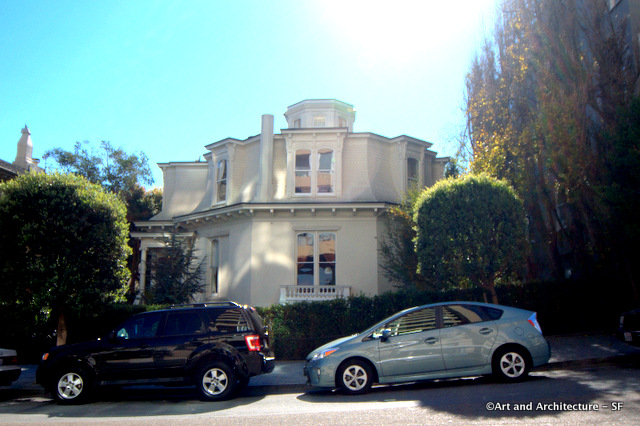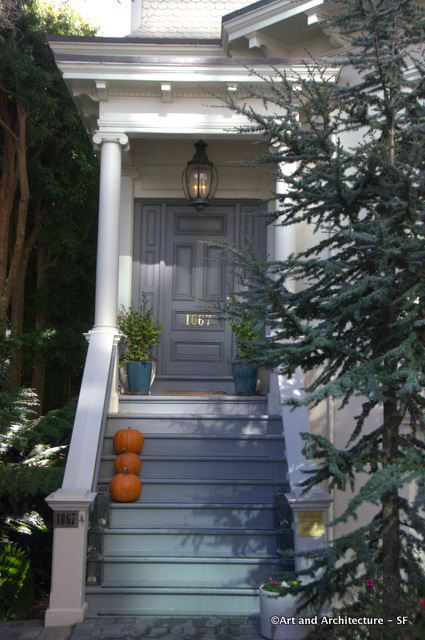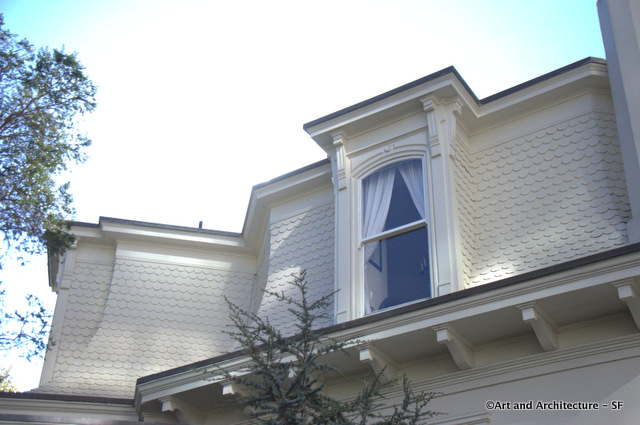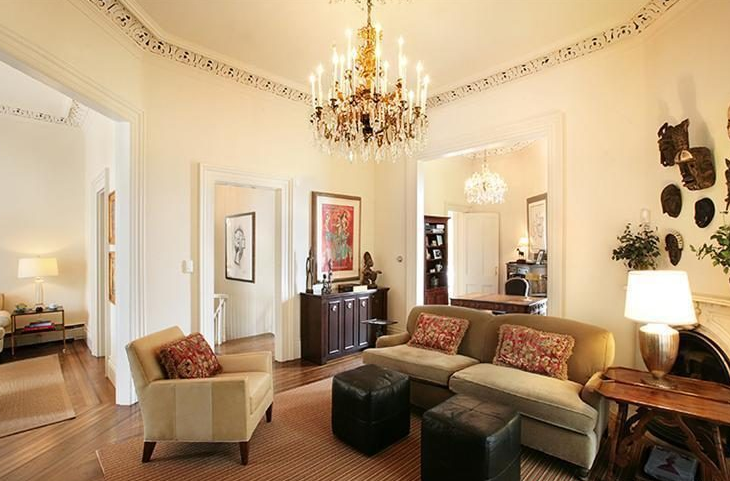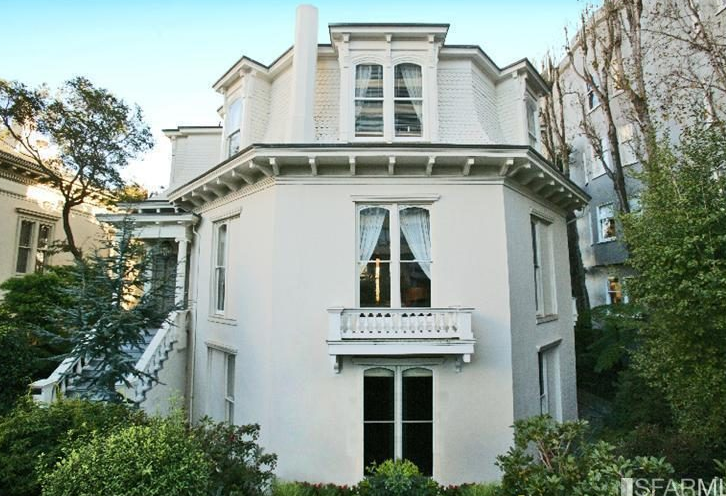1067 Green Street
Russian Hill
The Feusier Octagon House, built between 1857 and 1858, is one of only two surviving octagon plan houses in San Francisco. The other is the Colonial Dames Octagon on Gough Street. Both Houses retain their original exterior construction and reflect their eight-sided shape in the interior. This house was originally two stories and copied from a plan in a book on octagon houses by Orson Squire Fowler.
Phrenologist, Orson Squire Fowler published The Octagon House: A Home For All, or A New, Cheap, Convenient, and Superior Mode of Building in 1848. He started a 19th century fad in house building. Fowler maintained that the most efficient shape for a house is a circle, but that an octagonal house is almost as efficient and much easier to build, especially for carpenters of that period with their expertise in bay windows, towers, turrets and other fashionable follies. According to Fowler, octagons enclose more space with less material, provide more light and are more efficiently heated in winter and cooled in summer.
The house, originally built by George Kenny, his grandson Robert W. Kenny was Attorney General of California from 1943 to 1947. George Kenny was an agent for H. H. Bancroft, the famous bookseller, publisher and historian. (The Bancroft Library at UC Berkeley, named in his honor, was founded when the University of California purchased his book collection in 1905.)
The house was sold to San Francisco businessman Louis Feusier in 1875, and his family remained there until they sold it in 1954.
According to the family history, Louis Feusier arrived in California about 1852, spent the years 1857-1867 in Nevada, and then returned to San Francisco, later marrying Louise Guerne, daughter of the pioneer for whom Guerneville was named.
Feusier is said to have been a companion of such San Francisco notables as Leland Stanford and Mark Twain. Feusier’s many business interests include wholesale produce, mining, salmon canning, winemaking, and importation of oriental goods. His wife Louise lived in the house until her death, as did their son Clarence who died in 1951. In 1954 the Feusier Octagon was sold by the family.
The original two-story house was modified late in the century when the Feusiers added a third story with Mansard roof, topped by an octagonal cupola. Like other buildings on Russian Hill, the Feusier House escaped the 1906 Earthquake, but because of the fire, the outbuildings were dynamited but the main house was saved.
It is San Francisco Landmark 36. On March 24, 1974, it was added to the National Register of Historic Places.
The House was listed for sale in 2012 for 5.2 million. These pictures are from that real estate listing.
*
